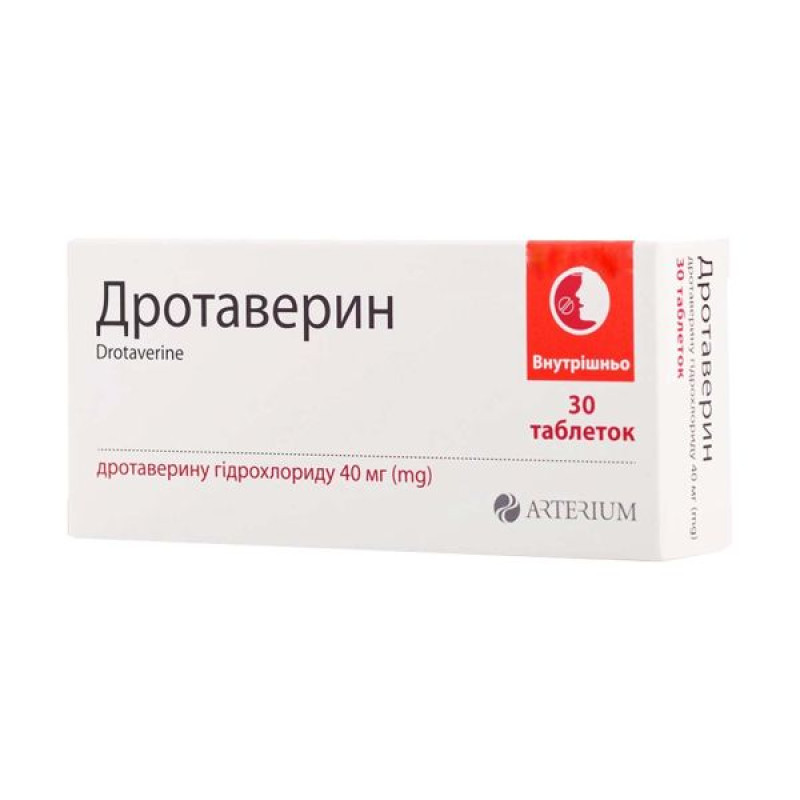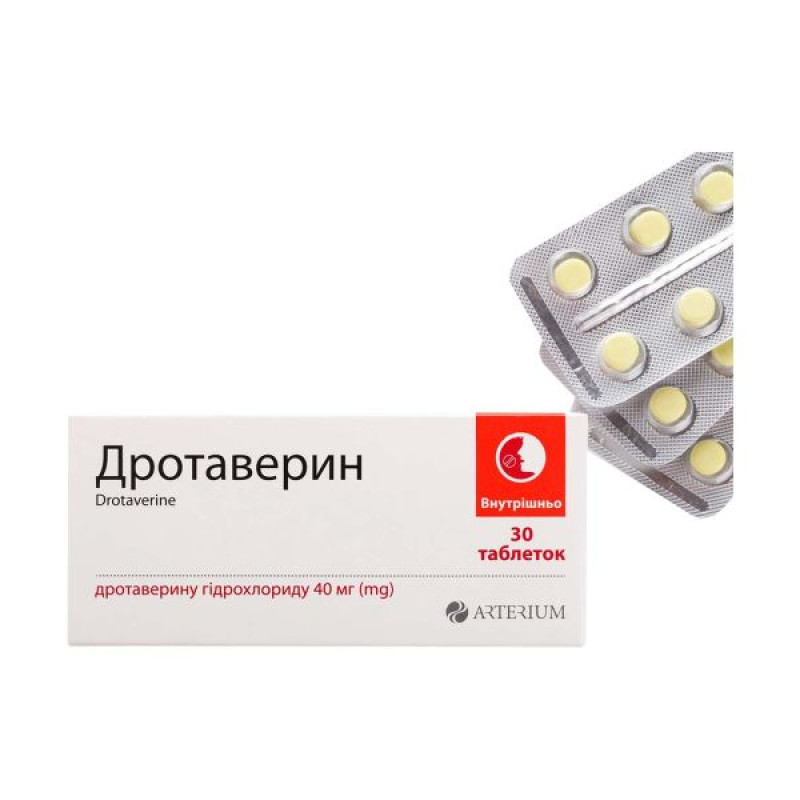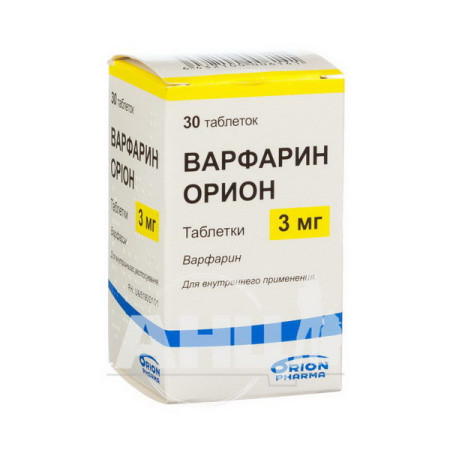Drotaverine tablets 40 mg blister No. 30

Instructions Drotaverine tablets 40 mg blister No. 30
Composition
active ingredient: 1 tablet contains drotaverine hydrochloride in terms of 100% substance 40 mg;
Excipients: potato starch; lactose monohydrate; povidone; calcium stearate.
Dosage form
Pills.
Main physicochemical properties: tablets of light yellow, light yellow with a greenish tinge, yellow or yellow with a greenish tinge, round shape with a flat surface, with a bevel. The surface of the tablets may have marbling.
Pharmacotherapeutic group
Drugs used for functional gastrointestinal disorders.
ATX code A03A D02.
Pharmacological properties
Pharmacodynamics
Drotaverine is an isoquinoline derivative that exhibits an antispasmodic effect on smooth muscle by inhibiting the action of the enzyme phosphodiesterase IV (PDE IV), which causes an increase in the concentration of cAMP and, due to the inactivation of myosin light chain kinase (MLCK), relaxation of smooth muscle.
In vitro, drotaverine inhibits the action of the PDE IV enzyme and does not affect the action of the isoenzymes phosphodiesterase III (PDE III) and phosphodiesterase V (PDE V). PDE IV is of great functional importance for reducing the contractile activity of smooth muscles, therefore, selective inhibitors of this enzyme may be useful for the treatment of diseases accompanied by hypermotility, as well as various diseases in which gastrointestinal spasms occur.
In myocardial and vascular smooth muscle cells, cAMP is hydrolyzed mainly by the PDE III isoenzyme, therefore drotaverine is an effective antispasmodic that does not have significant side effects on the cardiovascular system and a strong therapeutic effect on this system.
Drotaverine is effective in smooth muscle spasms of both nervous and muscular origin. Drotaverine acts on the smooth muscles of the gastrointestinal, biliary, genitourinary and vascular systems, regardless of the type of their autonomic innervation.
It increases blood circulation in tissues due to its ability to dilate blood vessels.
Pharmacokinetics
The effect of drotaverine is stronger than that of papaverine, absorption is faster and more complete, it binds less to serum proteins. The advantage of drotaverine is also that, unlike papaverine, after its parenteral administration, there is no such side effect as respiratory stimulation.
Drotaverine is rapidly and completely absorbed after oral administration. It is highly (95-98%) bound to plasma albumin, gamma- and beta-globulins. The maximum concentration in serum is reached within 45-60 minutes after oral administration. After primary metabolism, 65% of the administered dose enters the bloodstream unchanged.
Metabolized in the liver. The half-life is 8-10 hours.
Within 72 hours, drotaverine is almost completely excreted from the body, approximately 50% is excreted in the urine and approximately 30% in the feces. Drotaverine is mainly excreted in the form of metabolites, it is not detected in unchanged form in the urine.
Indication
For therapeutic purposes in:
smooth muscle spasms associated with biliary tract diseases: cholecystolithiasis, cholangiolithiasis, cholecystitis, pericholecystitis, cholangitis, papillitis; smooth muscle spasms in urinary tract diseases: nephrolithiasis, urethrolithiasis, pyelitis, cystitis, bladder tenesmus.
As an adjunctive treatment for:
spasms of smooth muscles of the gastrointestinal tract: gastric and duodenal ulcers, gastritis, cardio- and/or pylorospasm, enteritis, colitis, spastic colitis with constipation and irritable bowel syndrome accompanied by flatulence; tension headache; gynecological diseases (dysmenorrhea).
Contraindication
Hypersensitivity to drotaverine or any component of the drug. Severe hepatic, renal or heart failure (small cardiac output syndrome).
Interaction with other medicinal products and other types of interactions
Phosphodiesterase inhibitors, such as papaverine, reduce the antiparkinsonian effect of levodopa. Caution should be exercised when Drotaverine is used concomitantly with levodopa, as the antiparkinsonian effect of the latter is reduced and rigidity and tremor are increased.
Application features
Use with extreme caution in cases of arterial hypotension.
Each tablet of Drotaverine contains 50 mg of lactose. Do not use in patients with rare hereditary diseases such as galactose intolerance, the Lapp lactase deficiency or glucose-galactose malabsorption.
Ability to influence reaction speed when driving vehicles or other mechanisms
If patients experience dizziness after using the drug, they should avoid potentially dangerous activities, such as driving a car and performing work that requires increased attention.
Use during pregnancy or breastfeeding
Pregnancy: Retrospective clinical and animal studies have shown that oral administration of the drug does not indicate any direct or indirect harmful effects with respect to pregnancy, embryonic development, parturition or postnatal development. However, caution should be exercised when prescribing the drug to pregnant women.
Breastfeeding. Due to the lack of data, the use of the drug during breastfeeding is not recommended.
Method of administration and doses
Adults: the usual average dose is 120-240 mg per day in 2-3 divided doses;
When using drotaverine in children:
for children aged 6-12 years, the maximum daily dose is 80 mg (divided into 2 doses);
For children over 12 years of age, the maximum daily dose is 160 mg (divided into 2-4 doses).
Children
The use of the drug is contraindicated in children under 6 years of age.
The use of drotaverine in children has not been evaluated in clinical studies.
Overdose
Symptoms: with a significant overdose of drotaverine, cardiac rhythm and conduction disturbances have been observed, including complete bundle branch block and cardiac arrest, which can be fatal.
In case of overdose, the patient should be under close medical supervision and receive symptomatic treatment, including induction of vomiting and/or gastric lavage.
Adverse reactions
Side effects that may have been caused by drotaverine are listed by system organ class and frequency of occurrence: very common (> 1/10), common (> 1/100, < 1/10), uncommon (> 1/1000, < 1/100), rare (> 1/10000, < 1/1000), very rare (< 1/10000).
On the part of the immune system: rare: allergic reactions, including angioedema, urticaria, rash, itching, skin hyperemia, fever, chills, increased body temperature, weakness.
Cardiovascular system: rare: palpitations, hypotension.
From the nervous system: rare: headache, dizziness, insomnia.
Gastrointestinal: rare: nausea, constipation, vomiting.
Expiration date
5 years.
Storage conditions
Store in original packaging at a temperature not exceeding 25 ° C. Keep out of the reach of children.
Packaging
10 tablets in a blister; 3 blisters in a pack.
Vacation category
Without a prescription.
Producer
PJSC "Kyivmedpreparat".
Location of the manufacturer and its business address
Ukraine, 01032, Kyiv, Saksaganskoho St., 139.
There are no reviews for this product.
There are no reviews for this product, be the first to leave your review.
No questions about this product, be the first and ask your question.







